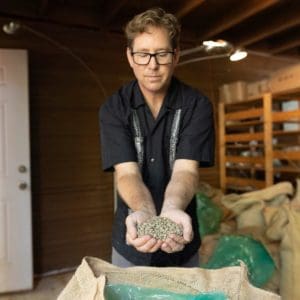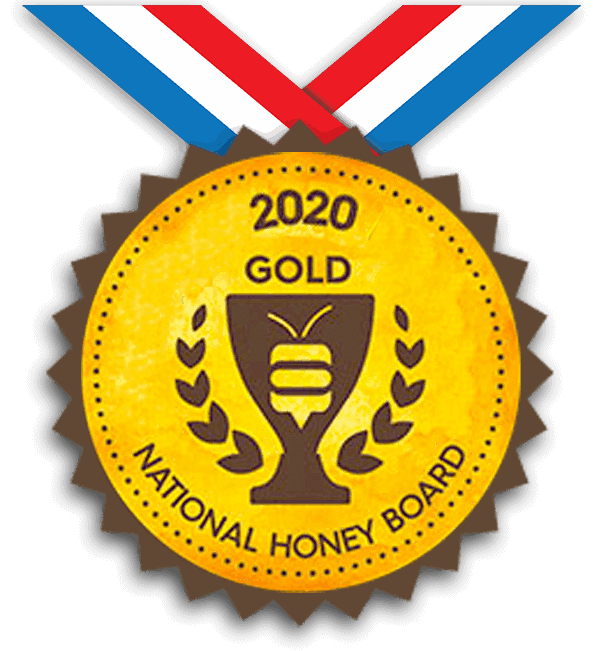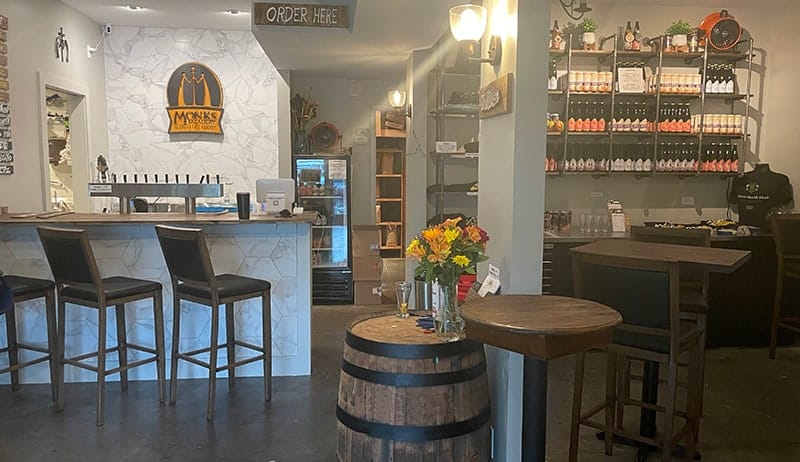Why You Should Be Sipping Mead
Previously we talked about mead following the “craftbrewing trend” with it being made in your friends’ basements, making an appearance in liquor stores, and meaderies popping up in your neighborhood. But why is it really making a comeback? Well, in addition to the reasons we discuss below, it makes the popular TikTok comedian, Aaron Chewing, feel like a badass Viking, even though he drives a Prius and currently has 2 bandages on his soft body because of boo-boos.
 Photo from @nwinpodcast
Photo from @nwinpodcast
Mead is Boozier
Mead has a high alcohol content, higher than beer and wine, which have an average ABV of about 6% and 13%. Since the alcohol in alcoholic beverages comes from fermented sugars, and honey naturally has more sugars than grains and grapes, it’s also going to be higher in alcohol content. If you think about it, honey is a sweetener we use as a replacement for sugar. That’s why honey has a forever shelf life, nothing can survive in a substance that high in sugar. Not even yeast, which eats sugar for a living. That’s precisely why honey has to be diluted for the yeast to survive and start turning it into alcohol.
The ABV in mead can range from 3% to 20%. A boozier alcohol was our owner’s idea behind making mead. As a young adult, fresh out of college, and broke, Justin and his friend set out on a journey to make their own beer, cheaper and boozier than 6% ABV. When they came across a recipe for mead at the end of a brewing book, they ended up with mead that was 15% ABV. Today you will find Monks Mead range from 5% ABV in Peachin To The Choir to 12% ABV in the original Monks Mead.

Mead is Tastier
Plain and simple. Think of honey as a blank slate that can take on a variety of flavor profiles. The fermented honey is commonly flavored with fruits, spices, and anything you can eat that’s tasty. Think of it this way, you can have blueberry honey that tastes delicious. You can have blueberry mead, which also tastes delicious. At Monks Meadery, Justin does a fantastic job with the flavor profiles of every mead on tap. To tell you how versatile it gets, we have a peach mead, a bourbon barrel-aged mead, a chocolate mead shot, a coffee mead, an Aperol Spritz like mead, and my absolute favorite, Sriki Tiki, our pineapple and almond mead. We also have seasonal flavors such as pecan cream and cranberry spice.
In perspective, can you think of a pineapple beer? Or a peach beer? Or a pecan cream beer? Hopefully no. Because I can, and I’d like to save you from a traumatic experience. I visited a brewery that will remain nameless not only because it didn’t make an impression on me at all, but also because it left a bad taste in my mouth, literally. Being the sweet tooth person that I am, I was excited to try vanilla, cherry, pear, and mojito brews, all of which were on the menu at this brewery. Instead, I found myself trying to down the 2 oz flight pours like the disgusting medicine your parents used to make you take back in the day. I was not a fan and would not recommend the experience to anyone. However, I will recommend the Monks Mead experience to anyone in a heartbeat.
 This and featured photos from @manicpixieboozegirl
This and featured photos from @manicpixieboozegirl
Lower Residual Sugar
You would begin to think that something sweet that is made from honey will be high in sugar. And I’m going to stop that thought. I can’t speak for all mead, but I can speak for Monks Mead, and our mead is low in residual sugar.
Let’s break it down. Not all yeast strains are created equal, some strains are capable of fermenting higher concentrations of sugar. Mead, wine, and beer all start with bases different in their sugar content and use different strains of yeast in the fermentation process. When making beer you use a strain that is capable of fermenting lower amounts of sugar, and when making wine, you use a strain capable of fermenting higher amounts of sugar. Mead has to use yeast strains similar to those used in wine.
To simplify it, if a strain of yeast that is only capable of fermenting lower sugar concentrations is put into a high sugar environment, it gets overwhelmed. You end up with high residual sugar. If a strain of yeast that is capable of fermenting high concentrations of sugar is put into a low sugar environment, it gets lazy. You still end up with high residual sugar. How much base you start with and which yeast strains you use to get desired product comes down to trial and error. Monks Mead has perfected this process. Majority of the sugar is fermented into booze leaving us with mead low in residual sugar.
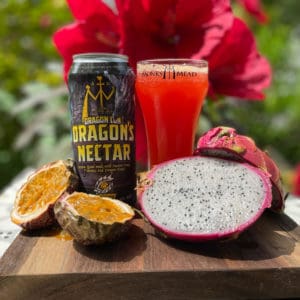
It’s Refreshing
I can’t speak for all mead on this one either, but I can speak for Monks Mead. Most mead is served still from wine bottles. Monks Mead is carbonated and served from the tap in our tasting room, and a bottle or can in your living room. The carbonation in combination with low residual sugar gives our mead that light and fizzy feeling with lots of taste. Every sip of Peachin To The Choir or our flagship Monks Mead feels like an ice-cold sip of goodness after mowing the lawn on a hot summer day. Aaron Chewing welcomes this change from his usual IPA picks because it’s lighter, tastier, and not as heavy. So come into our tasting room and stay awhile. Or crack one open at home, throw your feet up, close your eyes, and feel the paradise all around you.

It’s Award Winning Booze
Once again, I can’t speak for all mead, but if you do drink mead, you want it to be award-winning mead. The flagship meads in The Full Experience pack all hold at least a silver medal in mead competitions. The Mazer Cup is the largest mead competition in the U.S. and in 2020 it awarded a silver medal to Monks Mead, Peachin To The Choir, and Stigmata. The Mead Madness Cup is the largest mead competition in Europe and in 2020 it awarded a gold medal to our Abstinence in the Abbey and a silver medal to our Stigmata.

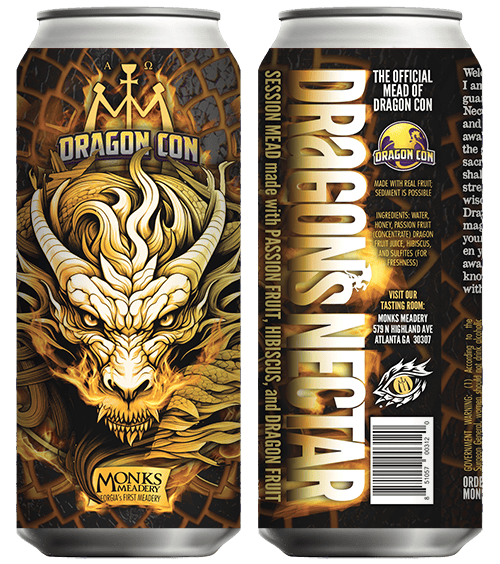
 TRIPLE WINNER at the MEAD CRAFTERS COMPETITION
TRIPLE WINNER at the MEAD CRAFTERS COMPETITION 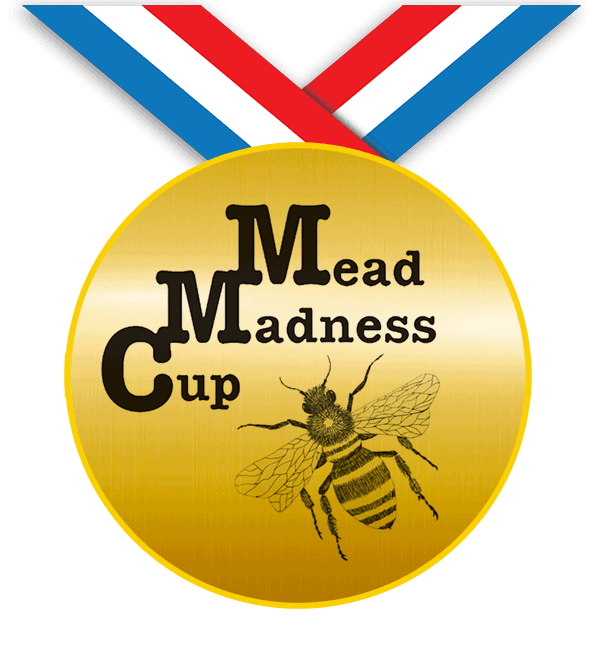 The FIRST AMERICAN MEADERY to MEDAL at the MEAD MADNESS CUP
The FIRST AMERICAN MEADERY to MEDAL at the MEAD MADNESS CUP MAZER CUP AWARD WINNER: TRY OUR AWARD-WINNING MEADS!
MAZER CUP AWARD WINNER: TRY OUR AWARD-WINNING MEADS!

